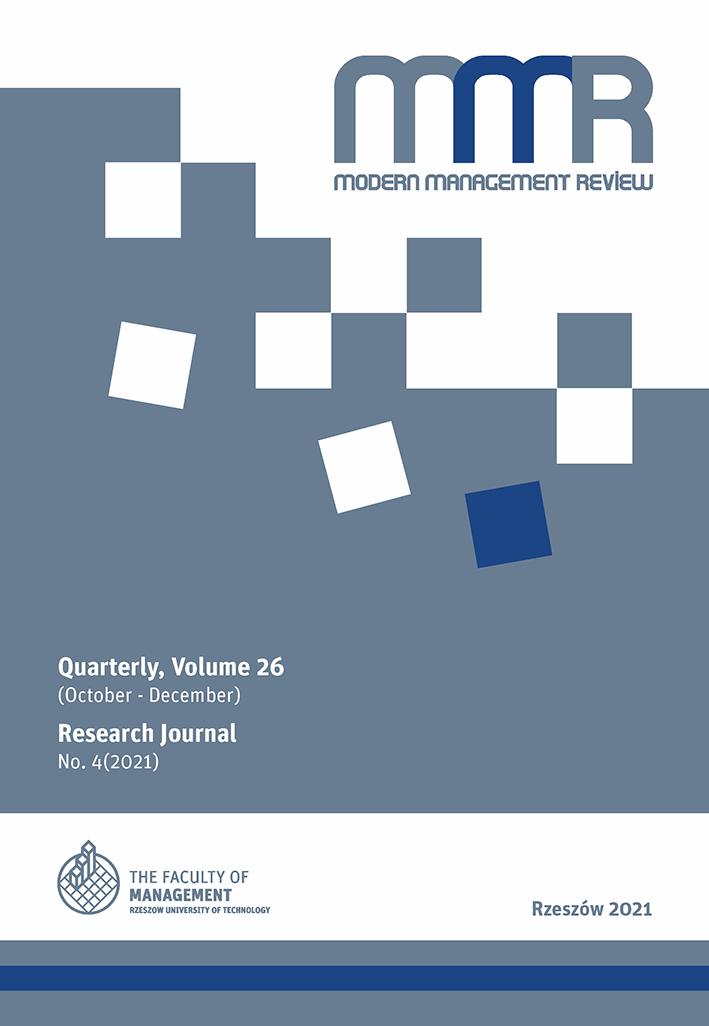Abstract
The article deals with innovation management in the conditions of a manufacturing company whose aim is to reduce the working time fund that directly determines productivity or efficiency of the company in competitive market conditions. Based on explicit quantification of time frames based on an analytical – chronometric method applicable to production operations in the process. The results of observation, time measurement, research and evaluation of time consumption during the implementation of a repeated production operation, or its complex part within defined production site are presented. Based on explicitly performed quantitative analysis, introducing of innovative technology, innovative solutions in the field of production technology management that support sustainable development
with an emphasis on the development of environmental quality are presented including
an explicit quantification of working time fund savings through the implementation of innovative machinery and equipment in critical production operations of the analysed production process.
References
Budzianowski, W. M. (2016). A review of potential innovations for production. conditioning and utilization of biogas with multiple-criteria assessment. “Renewable and Sustainable Energy Reviews”, 54. DOI: 10.1016/j.rser.2015.10.054.
Carter, F. J., Jambulingam, T., Gupta, V. K., Melone, N. (2001). Technological innovations: a framework for communicating diffusion effects, “Information & Management”, 38(5). DOI:10.1016/s0378-7206(00)00065-3.
Damanpour, F., Gopalakrishan. (2001). The Dynamics of the Adoption of Product and Process Innovations in Organizations. “Journal of Management Studies”, 38(1). DOI:10.1111/1467-6486.00227.
Dicová, J. (2008). Postavenie manažéra pri riadení inovačných projektov [In:] Zborník z medzinárodnej vedeckej konferencie Marketing a obchod 2008, Zvolen 2008. Drevárska fakulta TU Zvolen.
Estélyiová, K. (2007). Podstata inovácií a ich využitie v malých a stredných podnikoch [online]. Brno:V ysoké učení technické v Brně [access: 18.03.2020]. Access on the internet: http://www.konference.fbm.vutbr.cz/workshop/papers/papers2007/estelyiova.pdf
Guan, J., Chen, K. (2010). Measuring the innovation production process: A cross-region empirical study of China’s high-tech innovations. “Technovation”, 30(5–6). DOI:10.1016/j.technovation.2010.02.001.
Henriques, I., Sadorsky, P. (2007). Environmental technical and administrative innovations in the Canadian manufacturing industry. “Business Strategy and the Environment”, 16(2). DOI:10.1002/bse.475.
Ivanová, E., Tomanová, M. (2014). Inovácie ako zdroj konkurencieschopnosti ekonomiky SR. Sociálno-ekonomická revue, ročník 12, číslo 01.
Kováč, M., Lešková, A., Sabadka, D., Kováčová, Ľ. (2011). Tvorba a riadenie inovácií. Košice TU – SjF (Original in Slovak).
Malik, K., Bergfeld, M. (2015). A conceptual framework for intra-company technology transfer: cases of leveraging production process innovations across MNEs. “Technology Analysis & Strategic Management”, 27(10). DOI:10.1080/09537325.2015.1060309.
Vivero, R. L. (2002). The impact of process innovations on firm’s productivity growth: the case of Spain. „Applied Economics”, 34(8). DOI:10.1080/00036840010019684.
All texts published in the journal Modern Management Review are available in the full version on the website of MMR. Digital IDs have also been entered from number 19 (3/2012) (DOI: 10.7862/rz.2018.mmr.1)
Open Access – CC BY 4.0
This is an open access journal which means that all content is freely available without charge to the user or his/her institution. The articles are published under the terms of the Creative Commons licence (CC-BY 4.0), including the following fields of exploitation comprising:
1) the right to publish the Work in print in book and digital form and to distribute it in book and digital form, including by displaying, playing, broadcasting, making it publicly available by the Publisher and third parties,
2) the right to record and reproduce all or part of the Work on paper and in the form of a digital record and in any other possible way by the Publisher,
3) the right to enter the Work into computer memory and save the Work in the IT systems of the Publisher and other entities distributing digital content,
4) the right to archive the Work and make copies of the Work on electronic media by the Publisher, without quantitative restrictions,
5) the right to digitise the Work and to perform conversions/transformations of the Work in electronic form into other digital formats by the Publisher and third parties,
6) the right to distribute the Work, including via the Internet or other ICT networks by the Publisher and other third parties, in a way that allows viewing, reading, copying the content of the Work in electronic form, i.e. all elements belonging to it, whereby copying shall be understood as the saving of the Work made available to an interested person on a medium of their choice,
7) the right to store the Work in the database of the Publisher and other entities distributing the Work in any form, as well as its processing in the database of the Publisher and third parties,
8) right to translate and publish the Work in one of the modern languages in any form by the Publisher and third parties.


